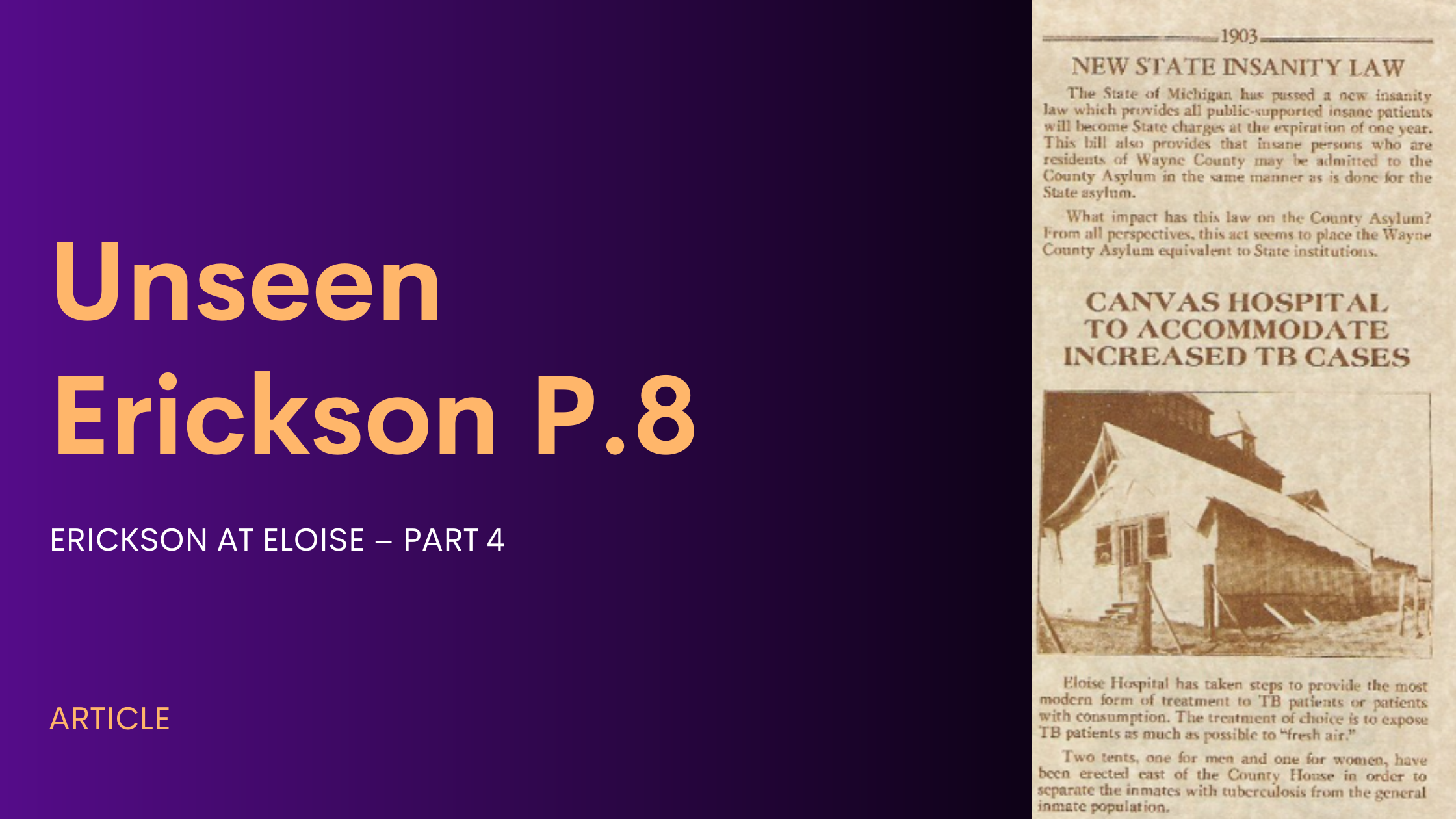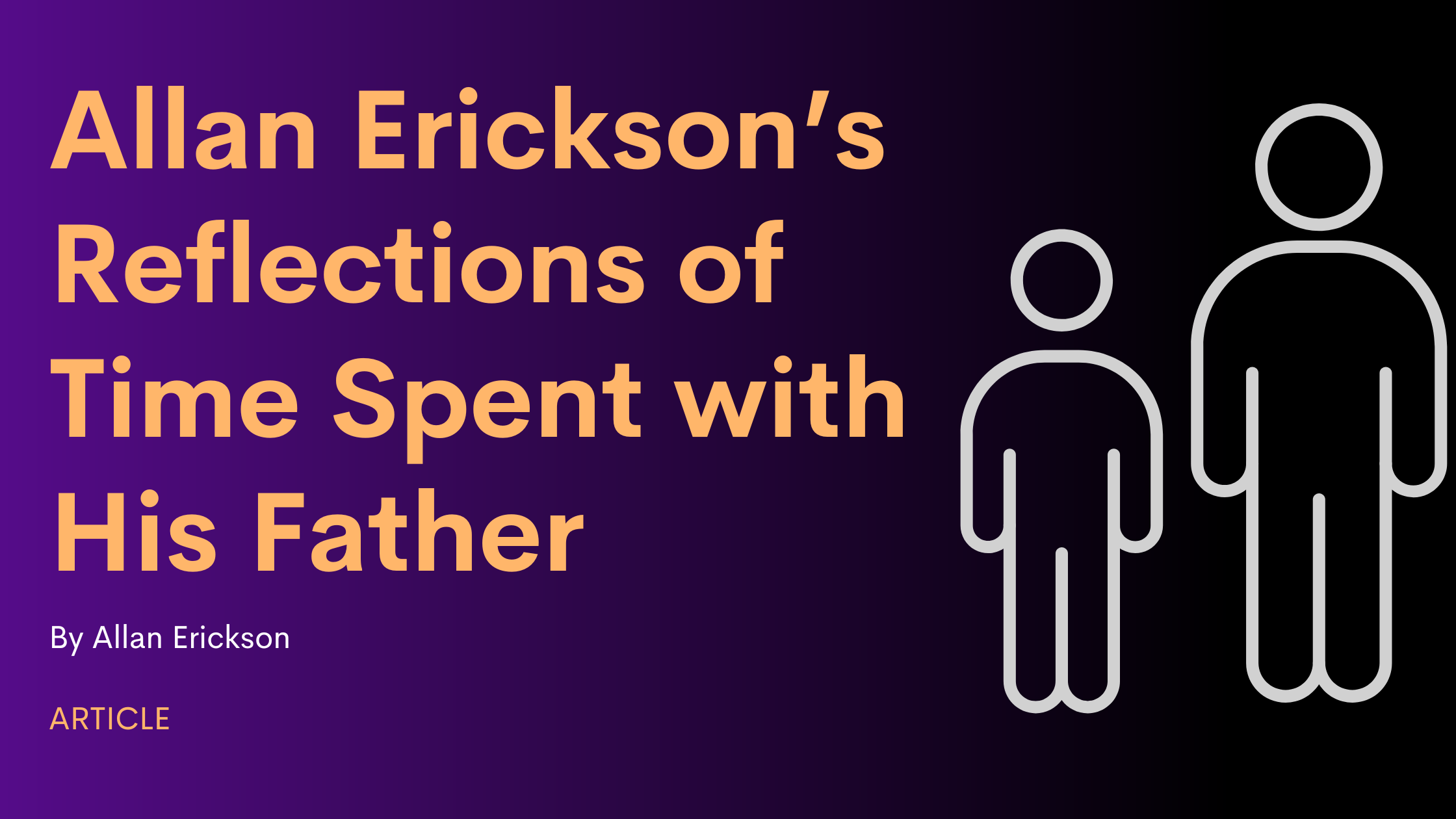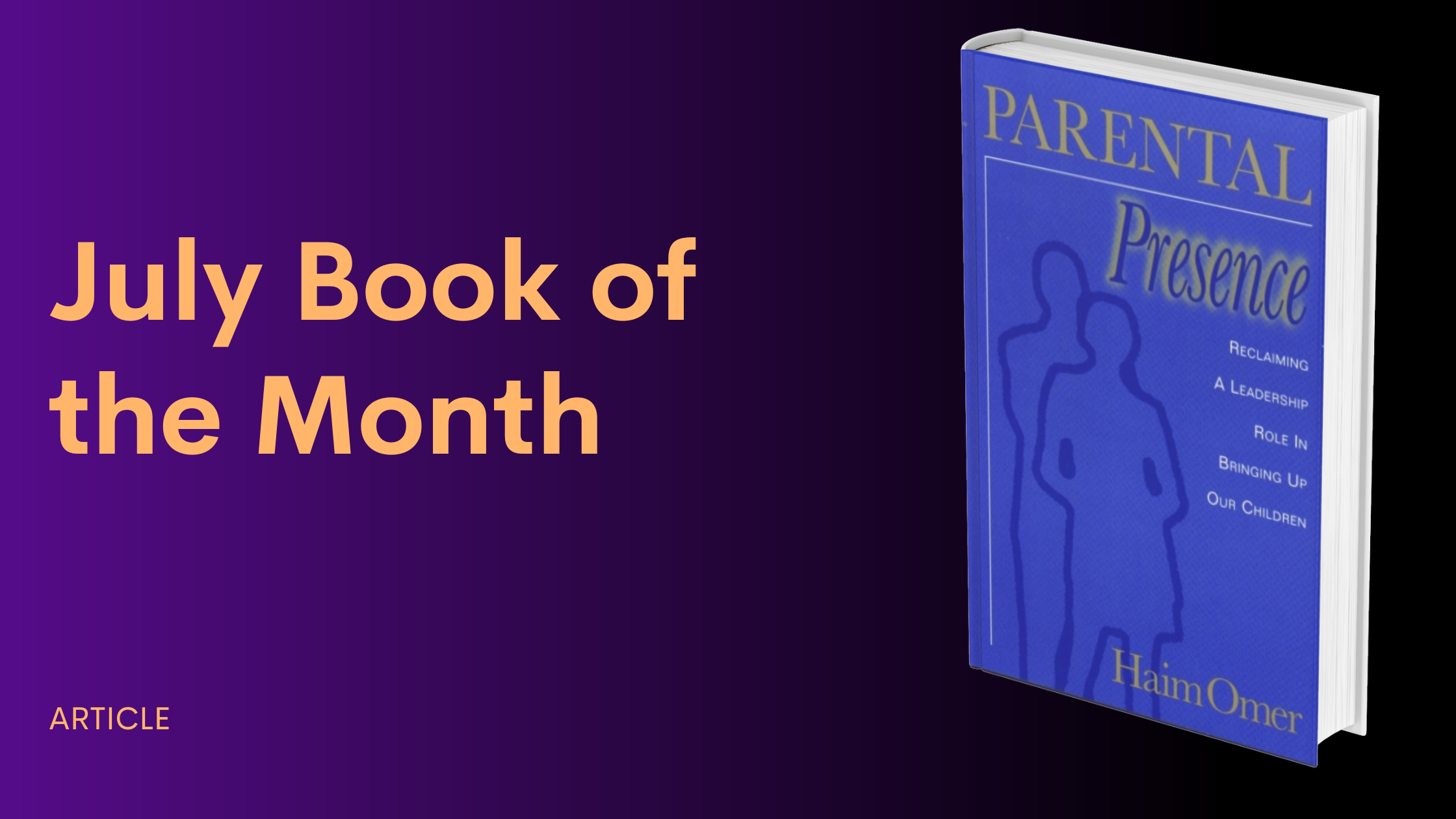
Where storytelling and creative learning come together
Unseen Erickson P.8
According to “An Epic Life 2” by Jeffrey Zeig, Ph. D., Erickson served as director of psychiatric research and training at Eloise from 1934 to 1948. From 1938 to 1942, he also served as instructor, assistant and associate professor in the psychiatry department of Wayne University College of Medicine in Detroit, Michigan. From 1942 to1948, he was a full professor at the Graduate School. While at Eloise, Erickson wrote clinical papers explaining some of his theory and experiences with hypnosis. He also conducted research. This blog post discusses the organization of the research department, the research conducted, his annual reports from 1936 to 1939, job descriptions for himself and for staff, and summaries of the number of clinicians working for him year-to-year.
Allan Erickson’s Reflections of Time Spent with His Father
Almost exactly 50 years ago, shortly after I moved out and was living at college, I successfully played a practical joke on my dad. However, in a way the joke is on me because I learned a great deal about my father during the course of this practical joke. I had a kind of contest with my older sister, Betty Alice. We would carefully go through whatever was …
Erickson Biography Excerpt
The following is an excerpt from the biography on Milton Erickson and was taken from an interview with Paul Lounsbury and Nancy Winston in May 1993. Paul C. Lounsbury and Nancy Winston were married from 1987 to 2003. They live in New York. Lounsbury is a marriage and family therapist and Winston is a clinical social worker and therapist. In the 1970s, Paul Lounsbury and Nancy Winston met at a transactional analysis conference and they began studying together. Both had read Uncommon Therapy (Haley, 1973) and both were intrigued with Milton Erickson. Lounsbury visited Erickson first, then the two went together. For the next few years, they visited separately or together. Lounsbury recalled his first visit:
July Book of the Month
When ‘Parental Presence’ is the Intervention If you ever work with parents that are exhausted, heartbroken, and overwhelmed, wondering how their once-sweet child became unreachable, then Parental Presence is a book worth having on your shelf. Rather than swinging between being too soft or too strict, Haim Omer offers parents a different path…one that’s rooted in calm and steady engagement.
Unseen Erickson P.7
According to “An Epic Life 2” by Jeffrey Zeig, Ph. D., Erickson served as director of psychiatric research and training at Eloise from 1934 to1948. From 1938 to1942, he also served as instructor, assistant and associate professor in the psychiatry department of Wayne University College of Medicine in Detroit, Michigan. From 1942 to1948, he was a full professor at the Graduate School. While at Eloise, Erickson wrote clinical papers explaining some of his theory and experiences with hypnosis. He also conducted research. This blogpost discusses a portion of the presentation he gave to general practice physicians in 1940.
June Book of the Month
Transformational Relationships by Dan Short explores creating stable, supportive, nurturing, empathetic relationships in a therapeutic environment. In the first sentence of the preface, Short provides his reasons for writing this book: “Having witnessed up close the destructive power of unhealthy relationships, I grew up wondering, ‘What do you do so that others are better off for having known you?’” And throughout the book, he answers this question, diving deeply into the heart and soul of psychotherapy.
Unseen Erickson P.6
According to “An Epic Life 2” by Jeffrey Zeig, Ph. D., Erickson served as director of psychiatric research and training at Eloise from 1934 - 1948. From 1938 – 1942, he also served as instructor, assistant and associate professor in the psychiatry department of Wayne University College of Medicine in Detroit, Michigan. From 1942 – 1948, he was a full professor at the Graduate School.
Elegant and Hasty
Tommy, eight years old, performed poorly at school, though a psychologist deemed him gifted. Using metaphor, the educator helps Tommy find his own resources to control impulsive behavior: “Well, Tommy, now I’m going to ask you some questions, Ok?”. Tommy nodded, moving a little on his chair. “Tommy, which number is double 15?” Tommy said automatically, without thinking, “20”. I said:
Unseen Erickson P.5
Sarah Clinebell, who has been working on the Erickson archives since June 2022, has supplied us with a folder that includes pictures of the Erickson’s ancestors, the story of Croakers and sketches of the Erickson apartment at Eloise. She also supplied us with pictures from the Erickson photograph collection including pictures of Erickson and his brother and Erickson inducing Betty Erickson into trance. According to “An Epic Life 2” by Jeffrey Zeig, Ph. D., Erickson served as director of psychiatric research and training at Eloise from 1934 - 1948. From 1938 – 1942 …
The Couples Conference: 30 Years of Shaping Couples Therapy
The best ideas often emerge from recognizing a need—the Couples Conference is a perfect example of this. What started as a conversation among colleagues became an event that has filled a crucial niche in the world of psychotherapy. The 2025 conference, titled “Reconnecting in a Disconnected World,” will be held virtually from May 2–4. Featuring an impressive faculty—Lilian Borges, Elliot Connie, William Doherty, Rebecca Jorgensen, Martha Kauppi, William Marsh, Rick Miller, Tammy Nelson, Terry Real, and Ari Tuckman—this year promises to
Sapphire Water on Fiery Red Flames
I did not know what time it was when I came downstairs to finish our winter display — images and symbols communicating the holiday season, as observed and celebrated by various sacred traditions in anticipation of the coming of the light. All I knew was that it was cold and dark outside, and I was ready to head home. Just as I was hanging one of the last ornaments, I caught a glimpse of her in the corner of my eye — a student of mine, who I knew had an extremely long commute. And, I also knew she had cancer, as she asked our community to remember her in our prayers at a service she could not attend last year.
Unseen Erickson P.4
The “Erickson Family History” chapter of “An Epic Life II: Milton H. Erickson Personal Perspectives,“ by Jeffrey Zeig, Ph. D. documents Erickson’s entry into interviewing suspects and convicts and reporting results to the courts. While in medical school at the University of Wisconsin, one of his professors recommended that he examine subjects and write reports for the Wisconsin State Board of Control.
The Lesser Of Two Evils
Judith was a 46-year-old woman who, for the first time in thirty years, was without a job. In the past, when she left a job, it was because someone contacted her with a better offer. Now, for the first time, she had to find a job for herself. She had been sending out resumes by the bushel but received no replies. Judith had been referred to me by someone who said I was practical and knew the ins-and-outs of the business world.
Feeling No Pain P.3
Twenty-six of Dr. Erickson’s former students are practicing psychiatry in army and navy hospitals and are among the steadily increasing number using hypnosis in treating fighting men who are suffering from those psychiatric breakdowns which cruel physical and mental torture bring to the best of men.
OCD, Chopin, and Hypnosis
Anxious parents called, each in turn, about their 17-year-old daughter Bev, who for the past six months had obsessively washed her hands three to four hours a day. Both parents reported they had “tried everything.” including counseling and drugs. They were so desperate they were now exploring hypnosis, about which they were skeptical. Somewhat worn down by their forceful skepticism …
Feeling No Pain P.2
Dr. Erickson is 43 years old and became first interested in hypnotism when he was 12, growing up on a Wisconsin farm. Another boy bought for 10 cents a book called, How to Be a Hypnotist. In spite of the detailed instructions, neither boy could hypnotize anybody, and young Milton, looking at the picture, said, “Of course you couldn’t learn to do that for 10 cents. But wait till I grow up. I’m going to be a hypnotist.”
Feeling No Pain
Mrs. Milton H. Erickson, of Eloise, Mich., has two fine children – Betty Alice, 7 years old, and Allan, 4. When they were born Mrs. Erickson says she felt no pain, since her husband, each time, put her in a hypnotic trance and told her the birth would be painless, and sure enough it was.
Unseen Erickson P.3
Erickson was living at 32 West Cypress in Phoenix. He traveled extensively that year, crisscrossing the country providing 55 lectures, seminars and trainings. He presented at universities, dental, medical, and clinical hypnosis conferences, and hospitals and for the United States Army. He lectured for Seminars on Hypnosis, a Chicago-based firm, that handled registration for the seminars. The three-day seminars cost $150.00 which included luncheons. “The instructors are recognized leaders in the field. All are experienced teachers and are engaged in clinical practice of medicine or dentistry.”
The Fantasy Bond in Childhood and Intimate Relationships
The human experience can be conceptualized as a series of separation experiences ending with death, the ultimate separation. Each successive separation or movement through life — separating from the mother’s body at birth and later from her breast, beginning to walk, talk, and develop a sense of self, going to school, dating, marrying, and becoming a parent and grandparent—predisposes an individual to anxiety. The basic tenet of my theoretical system is the concept of the fantasy bond: the core defense against separation, and later, death anxiety. The fantasy bond refers to the forming of a fantasy of connection or fusion, originally with the mother or primary caretaker, and later with other family members and romantic partners, in order to compensate for emotional pain and separation anxiety.
Tom
Tom, a young adult, has had a bipolar mental illness with episodes involving complex paranoid delusions. He had been hospitalized four times during the eight-year interval since his diagnosis and the time I saw him. Tom’s latest admission followed a trip, with his parents, in December 1991. Tom’s delusions intensified, on that trip, and he believed the name of a town where they had stopped (Winslow, Arizona) held a special message for him. He walked the streets through the nights, “circling around a U-turn exit and ending back at the hotel.” Tom said he could “…WIN the battle if he went SLOW.”





















